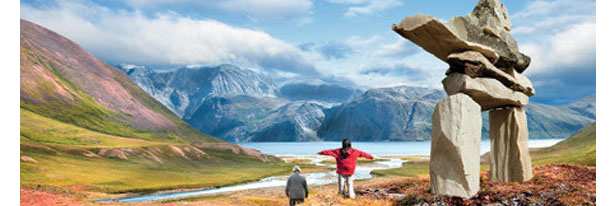In a webinar hosted last Friday, Keith Henry, the CEO and president of the Indigenous Tourism Association of Canada (ITAC), stressed the time has come for member businesses to pivot once again. That’s because those who run Indigenous tourism businesses must now focus on attracting domestic travellers since international visitors are not expected to return in droves any time soon because of COVID-19 pandemic restrictions.
“The word this year is ‘pivoting’,” Henry said. “It seems every two months we’re pivoting to deal with the next crisis.”
There’s no denying the tourism industry has been hit hard by the pandemic. Perhaps even more so for Indigenous tourism businesses, many of which are seasonal and have lost a good chunk, if not all, of their revenues in 2020.
“We were all hoping a second wave wouldn’t come,” Henry said. “But it is a reality. I will say we are pivoting again to talk about a second wave response.”
Joining Henry for the webinar was Lydia Zorn, the co-founder and partner of Insignia Marketing Research Inc.
ITAC commissioned Zorn’s company to conduct a study on the domestic travel market. A report was then issued.
The report recommends what those who own Indigenous tourism businesses and operate Indigenous cultural experiences have to concentrate on attracting those visitors from their own country now.
“COVID-19 has completely created the challenge that we just won’t have international visitation,” Henry said. “In the past many of our businesses across this country relied heavily on international visitors from the US, from France, from the U.K., from Germany, China and Japan.”
Henry realizes the recovery efforts for ITAC members and their businesses will not be an overnight fix.
“We know we’re going to have to rely on Canadians to stabilize revenues for our businesses over the next 12 to 24 to 36 months as we look to recover our sector,” he said.
Insignia Marketing Research held focus groups across Canada as part of their research. Participants took part in Halifax, Montreal, Toronto, Calgary, Vancouver and Yellowknife.
While there’s no denying many Indigenous tourism businesses are reeling now, Zorn said the report indicates better days can lie ahead for those that do change their way of thinking and start concentrating on attracting more Canadians.
“The thing that is really exciting is that it has emerged as an opportunity for Indigenous tourism and cultural experiences,” Zorn said.
Through the various focus groups staged across the country, it was discovered Canadians have undergone attitude and behavioural changes since the pandemic began when it comes to their travel plans.
Many Canadians are looking to only travel to destinations within their own province. And what would have been trips lasting two or three days in the past have now become main family vacations, lasting one to two weeks.
“Here is where Indigenous tourism and cultural products can really emerge as something unique and different and a hidden gem,” Zorn said.
Zorn said those in the Indigenous tourism industry must also change their ways of thinking.
“Clearly this domestic strategy is different,” she said. “It’s not like what you’ve been able to enjoy with the European strategy and your US strategy. And the other thing is a unified approach. The more you can work with each other and the more unified you can be in your presence, the more you’re going to be able to make an impact.”
The report also includes recommendations that ITAC should adopt in order to help their members attract more Canadian visitors.
These ideas include being more aggressive and engaging in both grassroots and guerrilla marketing, as well as investing in optimizing digital experiences.
The report recommends bringing destinations marketing organizations and provincial marketing organizations more on side and also having all parties cross promote.
“Now is the time to dig in and really start thinking about how you can attack and really get into the domestic market,” Zorn said.
Though he’s fully supportive of this approach, Henry said ITAC will be seeking both provincial and federal funding in order to create more awareness and interest in its members.
“A lot of our members don’t have deep marketing pockets,” he said. “ITAC has limited resources. And a lot of our Indigenous provincial/territorial organizations have limited resources.”

